Ettore Sottsass (1917 – 2007): Unconventional Poetry of Objects
Ettore Sottsass Jr. (born September 14, 1917, in Innsbruck – died December 31, 2007, in Milan) was an Italian architect and designer best known for bold furniture and objects that helped define the "Anti-Design" movement. Through this unconventional lens, Sottsass gained international recognition and lasting influence.
“I tried to break away from the everyday object and attempted to create Glass with a capital ‘G.’” – Ettore Sottsass
Foundations of a Visionary Career
Born to architect Ettore Sottsass Sr. and Antonia Peintner, Sottsass studied architecture at the Polytechnic University of Turin, graduating in 1939. Following military service during WWII, he launched his career in Milan in 1946 and opened his own studio the following year.
By 1957, Sottsass became the artistic director at Poltronova, where he explored new materials like fiberglass, shaping contemporary furniture and lighting. Around the same time, he began working with Murano glassmakers – an influence that deeply informed his approach to design.

Sottsass’s Design Philosophy and Murano Influences
Across furniture, ceramics, and glass, he infused objects with
- emotional resonance,
- symbolic meaning,
- and a narrative quality.
Sottsass’s design was never just about function. He broke with rationalism and minimalism, embracing bold colors, geometric abstraction, and an often playful, ironic spirit. While pushing boundaries, he always honored the craftsmanship of his collaborators – especially the Murano artisans he worked with for decades.
Looking for a rare glass vase or object by the influential Ettore Sottsass?
Shop Ettore Sottsass Glass Items here »
The Memphis Group and Ettore Sottsass’s Radical Glass Design
In 1980, Sottsass founded the architecture and design firm Sottsass Associati, followed by the creation of the Memphis Group in 1981 – an influential and boldly iconoclastic design collective known for its brightly colored, postmodern furniture, ceramics, and lighting. He remained involved with Memphis until 1985, when he turned his focus back to architecture.
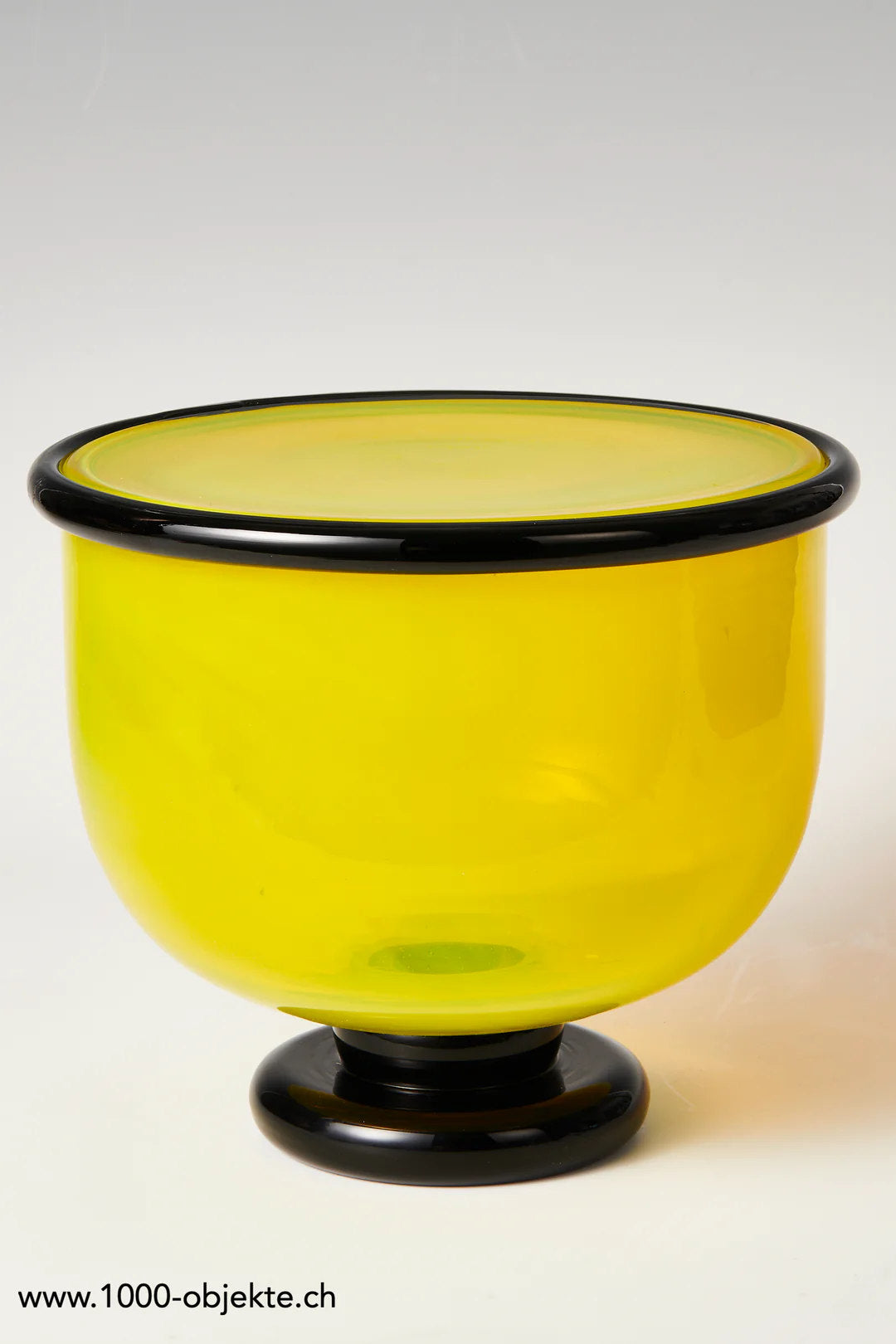
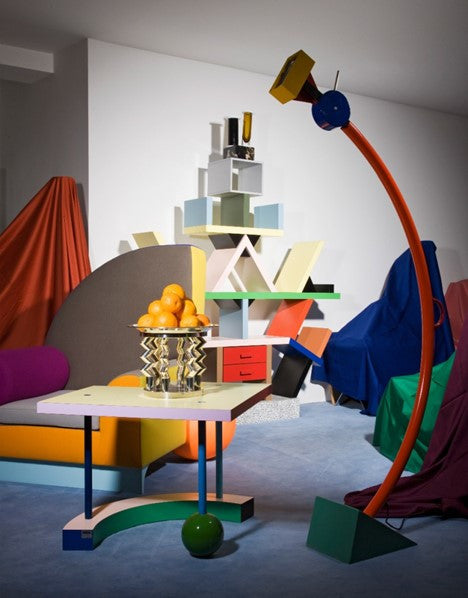
His Memphis-Era Glass Objects Defied Conventional Design Aesthetics:
- Unexpected, clashing, and vibrant color combinations became a hallmark.
- The geometric and abstract forms were often asymmetrical, incorporating stacked elements and unconventional silhouettes, sometimes resembling totems.
- The designs often injected a sense of playfulness, humor, and irony, challenging the seriousness of traditional design.
- While glass was central, he sometimes incorporated other materials like plastic laminates, further pushing boundaries.
Ettore Sottsass, with Memphis, aimed to disrupt the norms of everyday life, using glass not just for function but as a means of symbolic expression and a challenge to established tastes. Interestingly, for some of his Memphis glass pieces, Sottsass broke with the centuries-old Murano tradition of joint heating, introducing chemical gluing techniques.
Selected Works
“Sol” Fruit Bowl (1982)
Designed by Ettore Sottsass in 1982, the Sol fruit bowl is a vibrant embodiment of Memphis Group aesthetics – bold, playful, and sculptural. With its circular base, cylindrical stem, and shallow basin, it transforms geometric simplicity into visual drama.
The name Sol (“sun” in Italian) hints at its radiant, celestial character.Far more than a functional object, Sol challenges minimalist design with color, emotion, and irony – a collector’s piece that captures the rebellious spirit of early 1980s postmodernism.
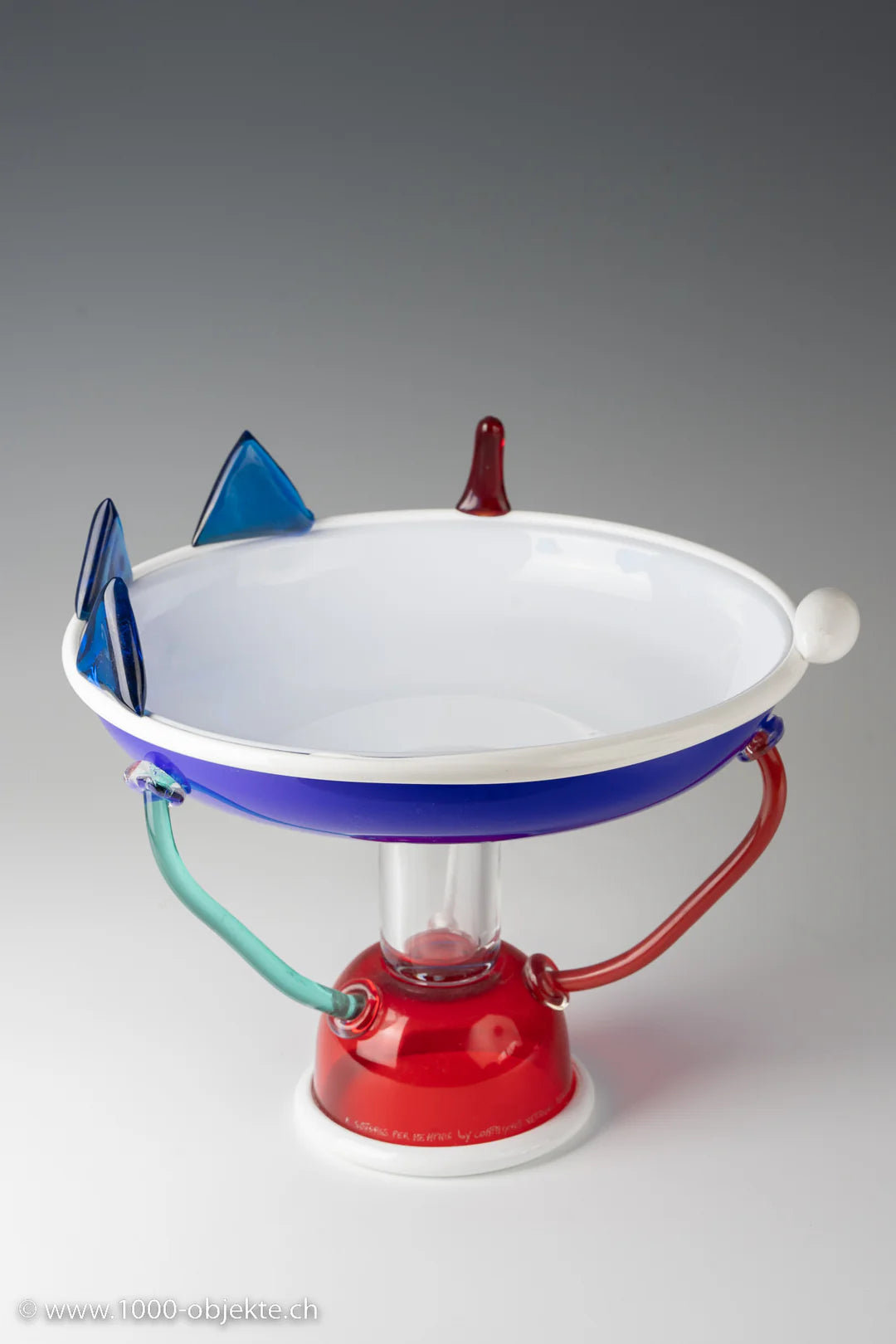
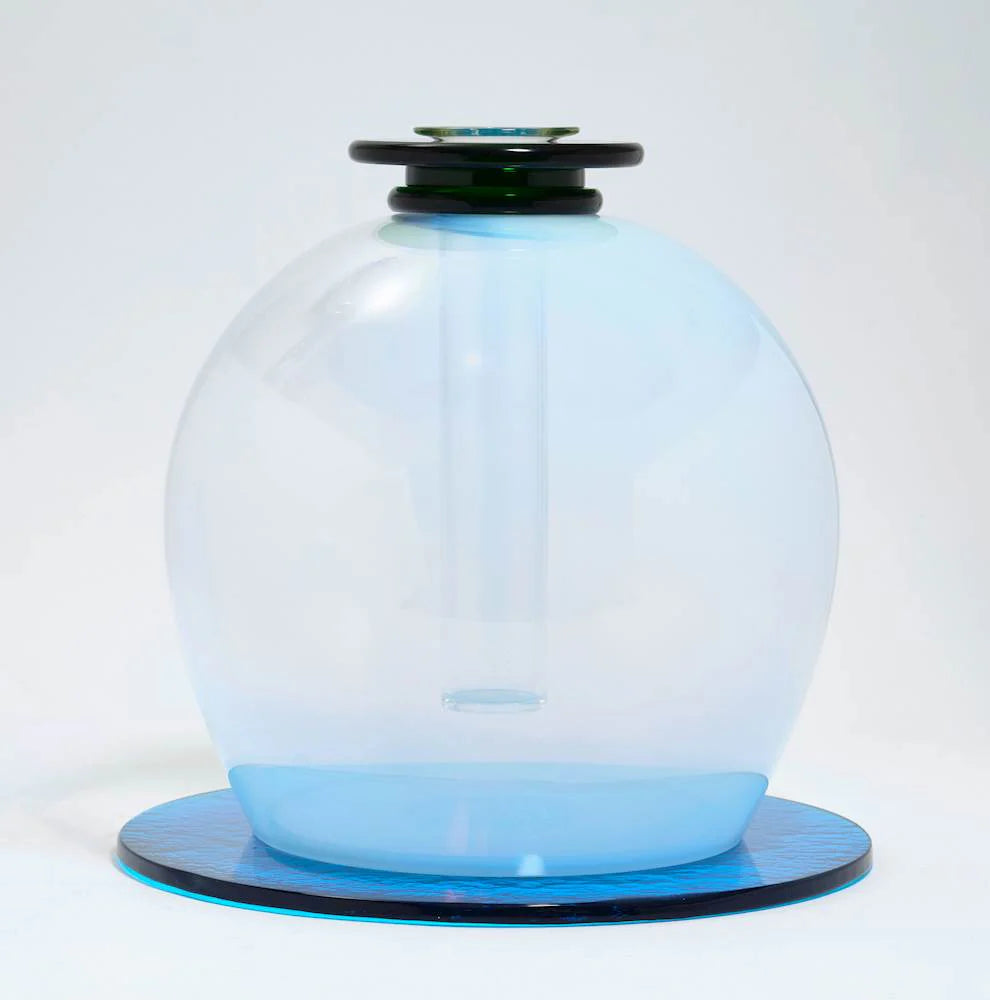
“Medusa” Vase, 1997 (for Venini, Limited Edition of 99)
Created for Murano glassmaker Venini in a limited edition of 99, the Medusa vase blends radical form with traditional craftsmanship. Its stacked silhouette and vivid contours reflect Sottsass’s mature postmodern style – part object, part presence.
Named after the mythical Medusa, Ettore Sottsass’s vase seems to possess its own gaze – captivating and powerful. It’s more than decor: Medusa stands at the crossroads of design, art, and myth, and remains a prized piece for collectors.
“Grifone” Vase (from the Shortstories Series)
Part of the Short Stories series, Grifone
is a sculptural vessel that speaks in poetic symbols. Its stacked, brightly colored geometric forms suggest a totemic figure – mysterious and ceremonial.
Named after the griffin, a creature of
vigilance and strength, this vase
embodies Ettore Sottsass’s belief in design as a narrative. Grifone is not just bold in form but rich in cultural resonance – a standout from his later, emotionally charged works.
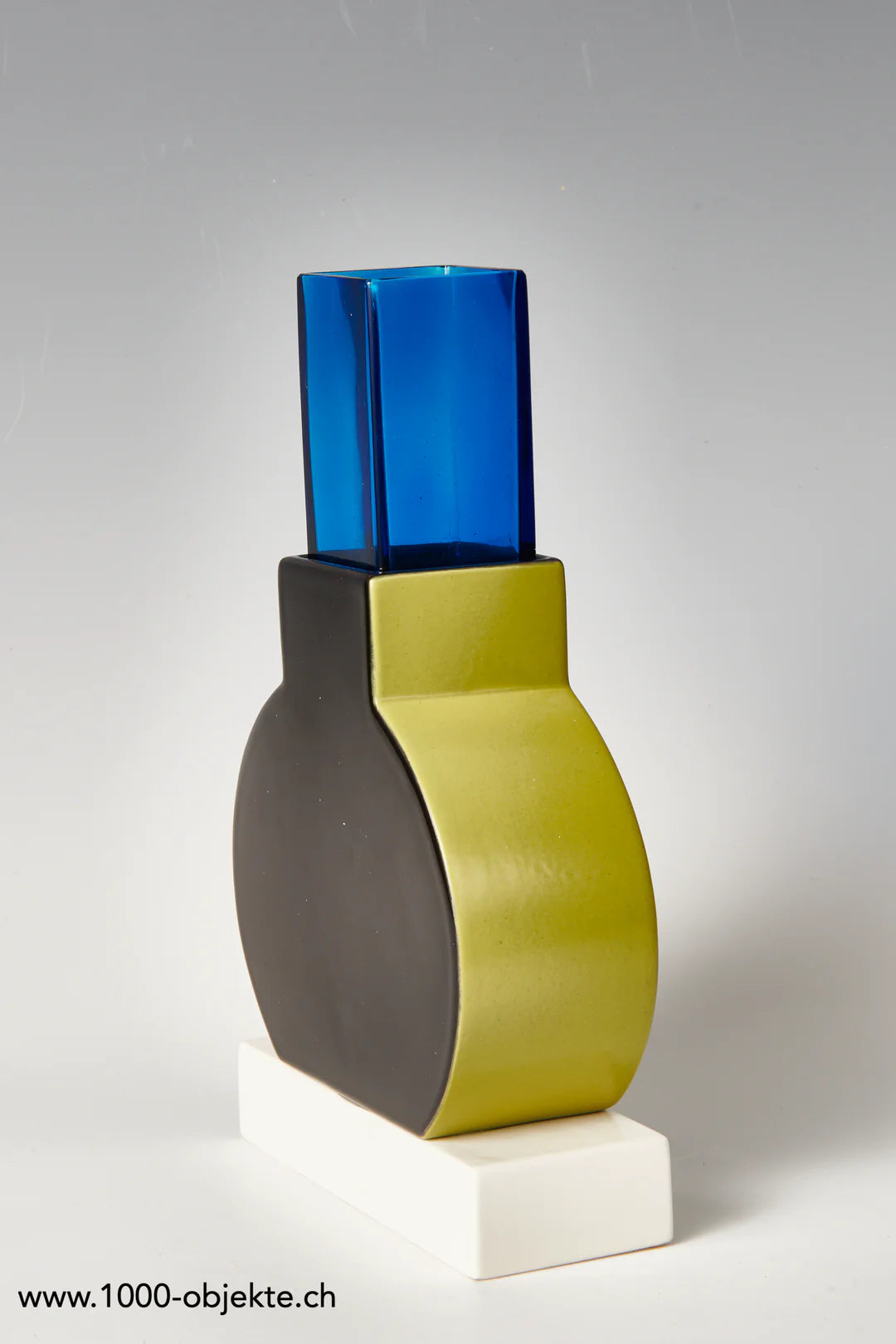
Sottsass’s Creative Legacy: Echoes of an Unconventional Design Genius
Sottsass’s impact on architecture and design is monumental. His work has been featured in major exhibitions, including the Venice Biennale (1976), Centre Pompidou (1994), and Design Museum London (2007). He passed away at 90, leaving behind a body of work that continues to inspire.
Rare Finds – Personally Selected by Peter Grünbaum
Discover a handpicked collection of rare and iconic Murano glass vases, curated with passion and expertise. Browse online to find the perfect piece – or reach out for personalized guidance. And if you’d like to see the pieces in person here in Zurich, I’m happy to welcome you.





